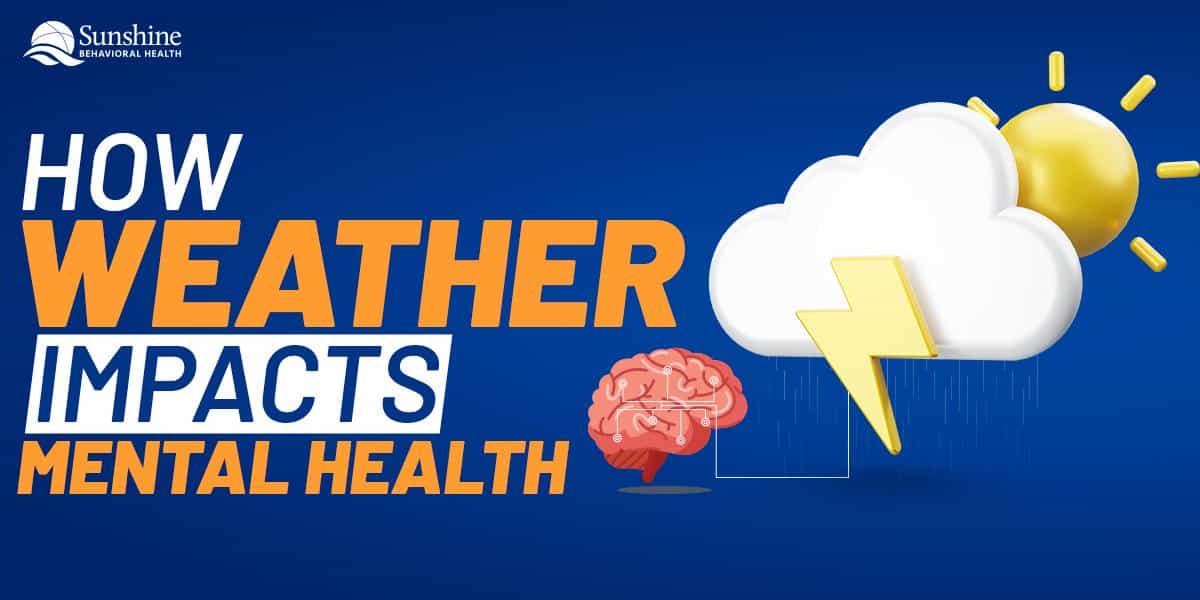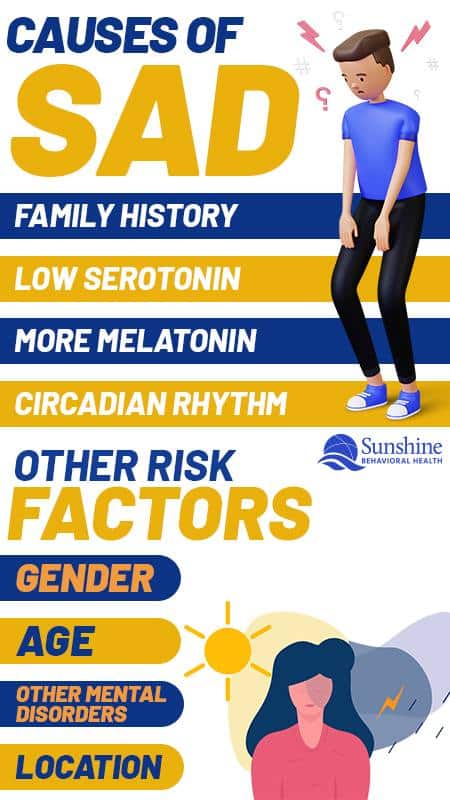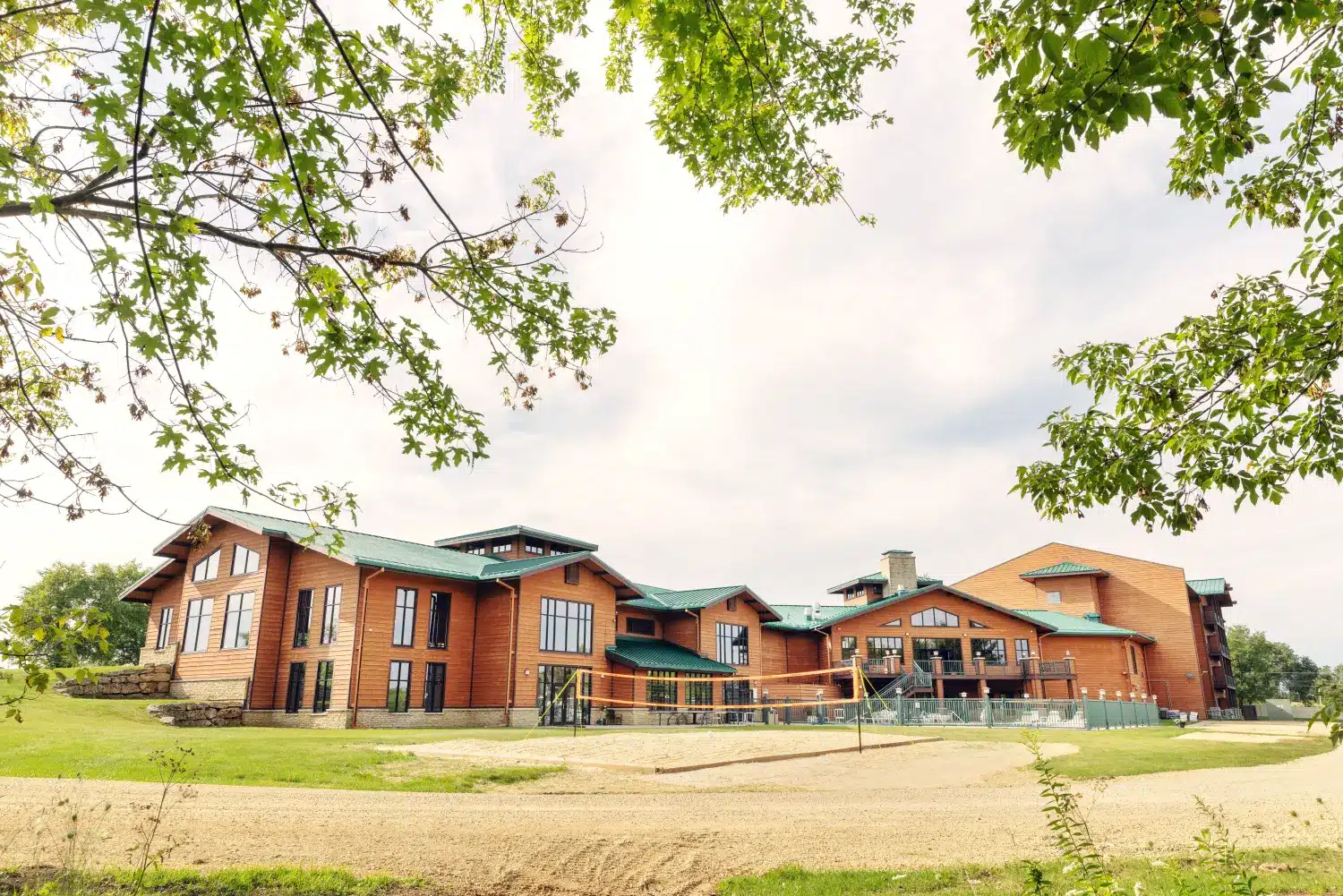Despite living and working most of their lives indoors, people’s moods and mental health are still closely connected to the outside environment: weather, temperatures, the length of the day, as well as air quality with contaminants and pollutants.
It’s not well-understood how the environment influences mental health issues such as depression, so many people do not seek or get the right or best treatment. More people need to recognize the effects of the environment on mental health and how to combat their impact.
Links between SAD and the Environment
Depression is one of the most common mental health disorders. Globally it affects 120 million people. In the United States, 6.7% or 16.2 million adults report at least one episode of major depressive disorder in a given year. Some have more than one.
(Bipolar disorder—alternating periods of deep sadness or hopelessness and irrational exuberance—affects about 2.8%.)
The main causes seem to be genetics and the environment, but there does not seem to be a single gene or environmental factor that predisposes people to depression. Often both are involved.
Environment refers to all non-genetic influences, including social—childhood stress or anxiety, economic status, and witnessing or experiencing violence—and physical.
Disruptions of normal weather patterns brought about by climate change can also harm mental health. Researchers discovered that warmer monthly temperatures can increase the likelihood of mental health difficulties by 0.5%. If this warming trend continues for five years, people are 2% more likely to experience problems with their mental health.
Environmental pollution, such as in the aftermath of serious environmental disasters, such as wildfires and hurricanes, can also produce a negative impact on mental health.
Hurricane Katrina occurred in 2005, but in 2009, researchers were still finding that 33% of the survivors reported symptoms of post-traumatic stress. Almost as many (30%) were still experiencing psychological distress.
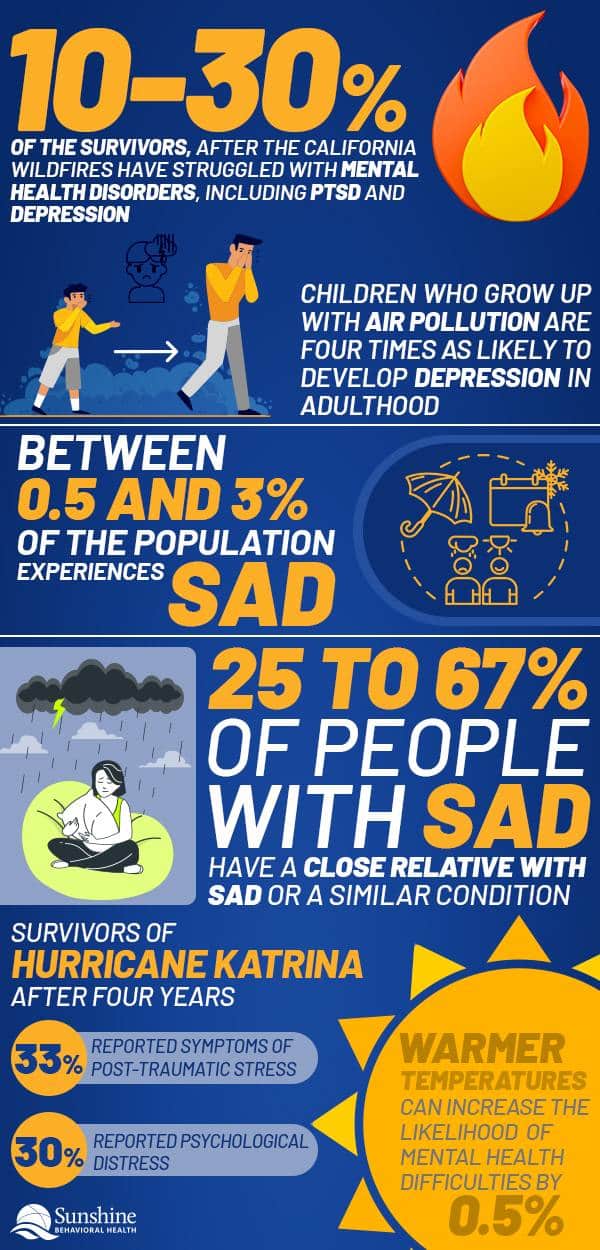
What Is Seasonal Affective Disorder?
Weather conditions often affect moods. A cloudy day can make someone feel a little down, but the sun peeking through the clouds can provide an instant boost to the mood.
For the majority of the population, those slight changes do not affect their ability to go about their daily lives. This is not the case for the 3% of the population who suffer from seasonal affective disorder (SAD).
Seasonal affective disorder (also known as SAD), is a form of depression related to seasonal changes. Its symptoms are similar to those of major depressive disorder and bipolar disorder but they are directly tied to the changing seasons.
Symptoms of Seasonal Affective Disorder
Many of the symptoms of SAD are the same as for a major depressive disorder:
- Fatigue
- Lack of energy or motivation
- Anxiety or guilt
- Lack of interest in favorite activities
- Social isolation
- Changes in appetite or weight
- Difficulty concentrating
- Feelings of hopelessness
- Extreme mood swings
- Thoughts of suicide
- Substance use disorder (alcohol, drugs) to cope
The main difference is that these symptoms are tired to the seasons: weather, temperature, and hours of sunlight per day.
People who suffer from SAD typically experience symptoms for 40% of the year. Most of the time, the symptoms repeat every year, but this is not a requirement for diagnosis.
Usually SAD affects people in the fall and winter but about 10% of those experience it in the spring and summer. SAD can cause social withdrawal and insomnia. In the winter, weight gain is common. In summer, SAD can cause weight loss, restlessness, agitation, and violent behavior
People may attempt to self-medicate by using alcohol or drugs to deal with their moods, but since alcohol and opioids are depressants, it might make the depression worse and more difficult to treat.
Causes of SAD
Why mood is tied to the environment in some individuals is still being researched. Among the suspected causes are:
- Family history. A family history of any type of depression can increase a person’s risk for SAD. Between 25% and 67% of people with SAD have a close relative with SAD or a similar condition. Around 15% of individuals with SAD have a first-degree relative who also has it.
- Serotonin. People with SAD seem to have lower levels of serotonin, a chemical that helps regulate mood. Lack of sunlight reduces serotonin levels.
- Melatonin. People with SAD may produce more melatonin, a hormone that can make people feel lethargic and sleepy. Less light means more melatonin.
- Circadian rhythm. People have an internal biological clock that helps tell them when to sleep and when to wake, but it is influenced by signals such as daylight. Winter-onset SAD seems to coincide with these changes in hours of daylight.
Other Risk Factors for SAD
Other factors that may put people more at risk of SAD include:
- Gender. Women are more prone to environmentally-based depression than men.
- Age. SAD is more common among young adults than children and older adults.
- Depression or bipolar disorder diagnosis. An estimated 15 to 22% of people with bipolar disorder experience season-related changes in their moods and behavior, a major indicator of SAD.
- Location. SAD is more common in people who live far from the equator than those who live close to it. Similarly, people who live in rainy or cloudy areas, such as the Pacific Northwest, are more prone to problems with SAD than those who live in sunnier areas.
Other Environmental Impacts on Mental Health
While SAD is one of the most commonly known impacts of the environment on mental health, it is just one of several. Some additional factors that can impact mental health include:
- Pollution. Growing up in an area with poor air or water quality quadruples a person’s risk of developing depression as an adult. Risks for dementia, anxiety, and suicide also increase. Exposure to lead can cause behavioral, intellectual, and learning difficulties in children.
- Natural disasters. In addition to the trauma caused by a natural disaster, the resulting environmental changes can increase the number of people with mental health problems—depression, post-traumatic stress disorder (PTSD), substance use disorder—as well as incidents of domestic violence.
- Between 10% and 30% of the survivors of wildfires, such as have ravaged California in recent years, develop diagnosable mental health disorders.
- Another 50% may have undiagnosed effects that affect the quality of life but fade with time.
- Noise Pollution. Though not directly connected to the natural environment, noise pollution—particularly due to traffic—is connected to increasing the numbers of or exacerbating a range of physical and mental health concerns, including depression, anxiety, insomnia, and fatigue.
Treatment for Environmental Mental Health Concerns
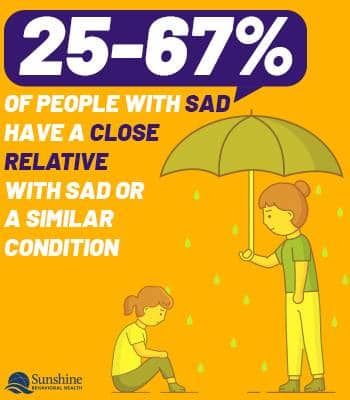 With professional help and other options, many people with SAD and other environmental mental health issues can find relief. Some treatment options include:
With professional help and other options, many people with SAD and other environmental mental health issues can find relief. Some treatment options include:
- Light therapy. Sitting in front of artificial light—a therapy lamp or lightbox—first thing in the morning can trigger changes in brain chemistry that can boost mood.
- Spending time outdoors. Just taking a walk outside can make a difference when someone is battling SAD. Even if it is cold, rainy, or cloudy outside, research has found that outdoor time can elevate the mood.
- Exercise. Physical activity releases endorphins that can improve mood and improve overall health, which is beneficial for many mental health disorders.
- Medication. People with a history of SAD or similar conditions may benefit from taking an antidepressant such as bupropion (Wellbutrin) seasonally, starting before symptoms usually start.
- Counseling and psychotherapy. Talk therapy, especially cognitive-behavioral therapy, can help identify and change negative thinking and behavior that could be making the mental health issues worse.
- Mind-body techniques. Alternative treatments for SAD, depression, and other mental health disorders include relaxation/meditation techniques and art/music therapy.
Even though seasonal affective disorder may seem like a mild condition, it can have far-reaching effects. Finding professional, medical help is vital. With the right treatment and support, those living with this condition can manage it and move forward.
Mental Health Resources
Because seasonal affective disorder and similar mental health conditions linked to the environment can have a significant impact on one’s quality of life, receiving treatment is crucial. Resources can help people find help when they need it.
American Academy of Child and Adolescent Psychiatry. AACAP is a nonprofit that helps connect children and their parents with help and advice including:
A database of psychiatric care providers for children and adolescents
Frequently asked questions about depression in children
Videos by and for children on mental health
American Foundation for Suicide Prevention. AFSP is a voluntary health organization that provides access to help and counseling for those with suicidal thoughts due to depression and other mental health issues. Text TALK to 741741.
Crisis Text Line. This text message service provides free, 24/7 mental health support. In the United States and Canada, text HOME to 741741. There’s also a Facebook Messenger account.
National Alliance on Mental Health. NAMI is a nationwide network of mental health professionals that supports people struggling with SAD and other mental health conditions. Call 800a950aNAMI or text NAMI to 741741.
National Network of Depression Centers. NNDC connects people with seasonal depression to participating local doctors or therapists.
National Suicide Prevention Lifeline. This 24/7 phone line (800a273a8255) provides emotional support, information, and professional mental health contacts for anyone who feels at risk for suicide.
Substance Use Disorder and Mental Health Services Administration National Helpline. SAMHSA, part of the U.S. Department of Health and Human Services, maintains a national helpline for anyone struggling with mental health or substance use disorders. —800a662aHELP (4357)—and online treatment locators and other resources.
Sources
Medical disclaimer:
Sunshine Behavioral Health strives to help people who are facing substance abuse, addiction, mental health disorders, or a combination of these conditions. It does this by providing compassionate care and evidence-based content that addresses health, treatment, and recovery.
Licensed medical professionals review material we publish on our site. The material is not a substitute for qualified medical diagnoses, treatment, or advice. It should not be used to replace the suggestions of your personal physician or other health care professionals.
